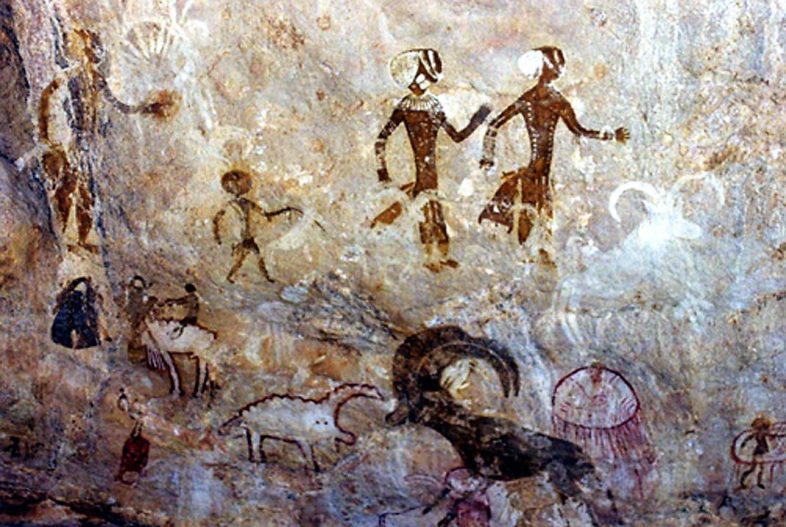To understand our languages it may be necessary to understand its Stone Age roots. To understand those biliteral (two-letter) words it may be necessary to understand how did the linguists of the Stone Age understood their world and tried to interpret it in simple terms that can be understood by the members of their communities.
Those clever linguists saw things around them that needed to be communicated so they gave them certain names many of which we use today. In most other cases they did not see individual things or situations that needed to be expressed in words but domains such as a beehive or a bird’s nest.
We will be discussing together many aspects of the life of our Stone Age ancestors but here are a few examples that may help understand the ancient world and therefore understand our own.
Examples:
A: How did they view Earth and Heaven?
B: They looked at the sky and found it blue, just like water. Root > *Mʼ “water”; Prefixed specifier extension > ‘s*Mʼ “sky, heaven”.
A: What did they think of marriage?
B: All year sex. Root > *NK “screw”; Suffixed specifier extension > ‘*NKḥ’ “marriage”.
A: What difference did they make between men and women?
B: None. If the man has a functional penis he is *ʼR “penis”. If the woman has a functional cunt she is *ʼR “cunt”. Same word. What about “bottom”? The distance is not that far so there was no need to invent a new word for it. It is the same word – *ʼR.
A: What is the word for “man” and the word for “woman”?
B: The same but with a reversed root: *Rʼ. Later, like several thousand years later, they chose a proper name for both of them by adding the letter ‘m: *mRʼ “boy, girl, woman, man, old woman, old man, a person” etc.
A: What was their concept of “history”?
B: Anything that happened behind the bottom is history. The formula name: word for bottom (*ʼR) + ‘ḫ” = *ʼRḫ.
A: A penis and a nipple are from same linguistic structure, how come?
B: Both are suckable. Both produce “white” liquid from a slit and both have the same upper face.
A: Did they use metaphors and similes?
B: Yes because they had relatively so few roots they had to improvise by adding images to the original one. Example? ‘*ZB’ “penis”. “The sun *ZBbat in the evening”: Literally “The sun ‘penised’ in the evening”. Figuratively, “The sun hid in descending darkness of the evening like a penis hides in the public hair.”
A: Why did they lumped together “penis”, “nipple” and “raisins”?
B: Because they all have shrivelled skin.
A: Were partners loyal to each other after death?
B: Some, at least were. How do we know? By identifying a word like “widow”. There is one in a unique linguistic structure we named Nucleitic Compound made of two different roots – ‘Armal/Armala’ “male widow, female widow”. The two roots have a literal meaning and an idiomatic meaning. Literal: “He or she who turned away from sex or dismissed sex”.
The identification of the word is interesting because a “widow” in ancient talk didn’t mean somebody whose partner died but somebody who turned away from sex after losing him/her. The inference is that they didn’t seek another partner.
The IPA (International Phonetic Alphabet) = *ʼR/*ML, the first used in the examples above. Nucleitic Compound are the fourth building blocks historically used for names like Damascus and Carmel. Damascus is said to have been founded 10,000 years ago. If you tell us when was the last Neanderthal perished in Syria we may give you a guesstimate of 25,000 years. Neanderthals have a special root *DM (Dum) “the short and ugly”.
A: How did they view humanity?
B: Mouths to feed. *KL “everybody, eat”. Later, really later, they added a specifier letter so now the word for “food” is “Akl”.
A: Does the same natural and simple principle apply to religions?
B: On a time scale of ten religion came nine. Religions had to use the language of the people. Generally speaking, religions are consumers of language not producers. but priests extended certain words beyond the general consensual meanings. We are still looking but we have not, yet, found religious words that have no prehistoric roots and that includes “God” or the name equivalent in Christianity, Judaism and Islam.
We’ll add examples as we go along.
Last modified: August 31, 2017



